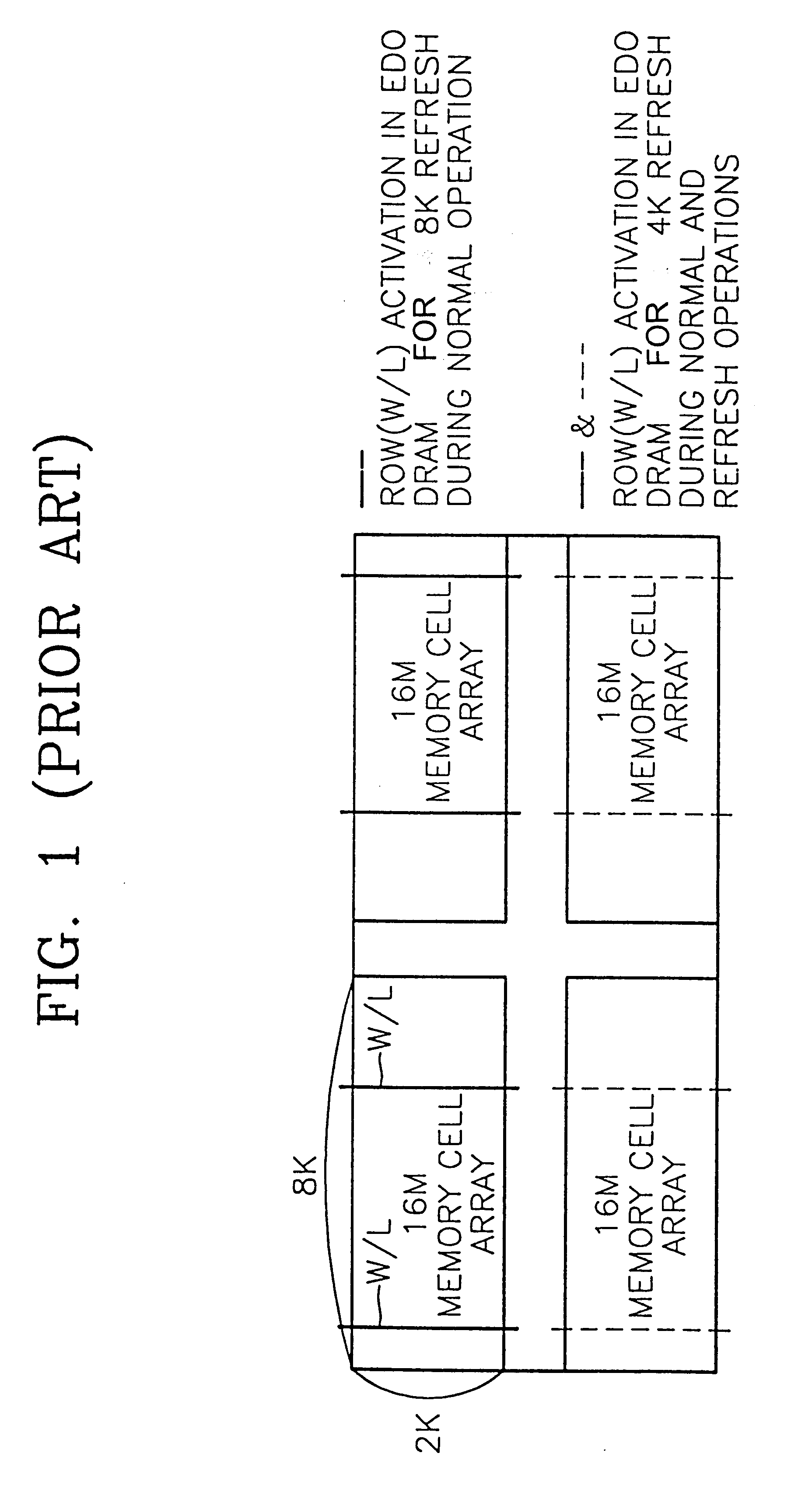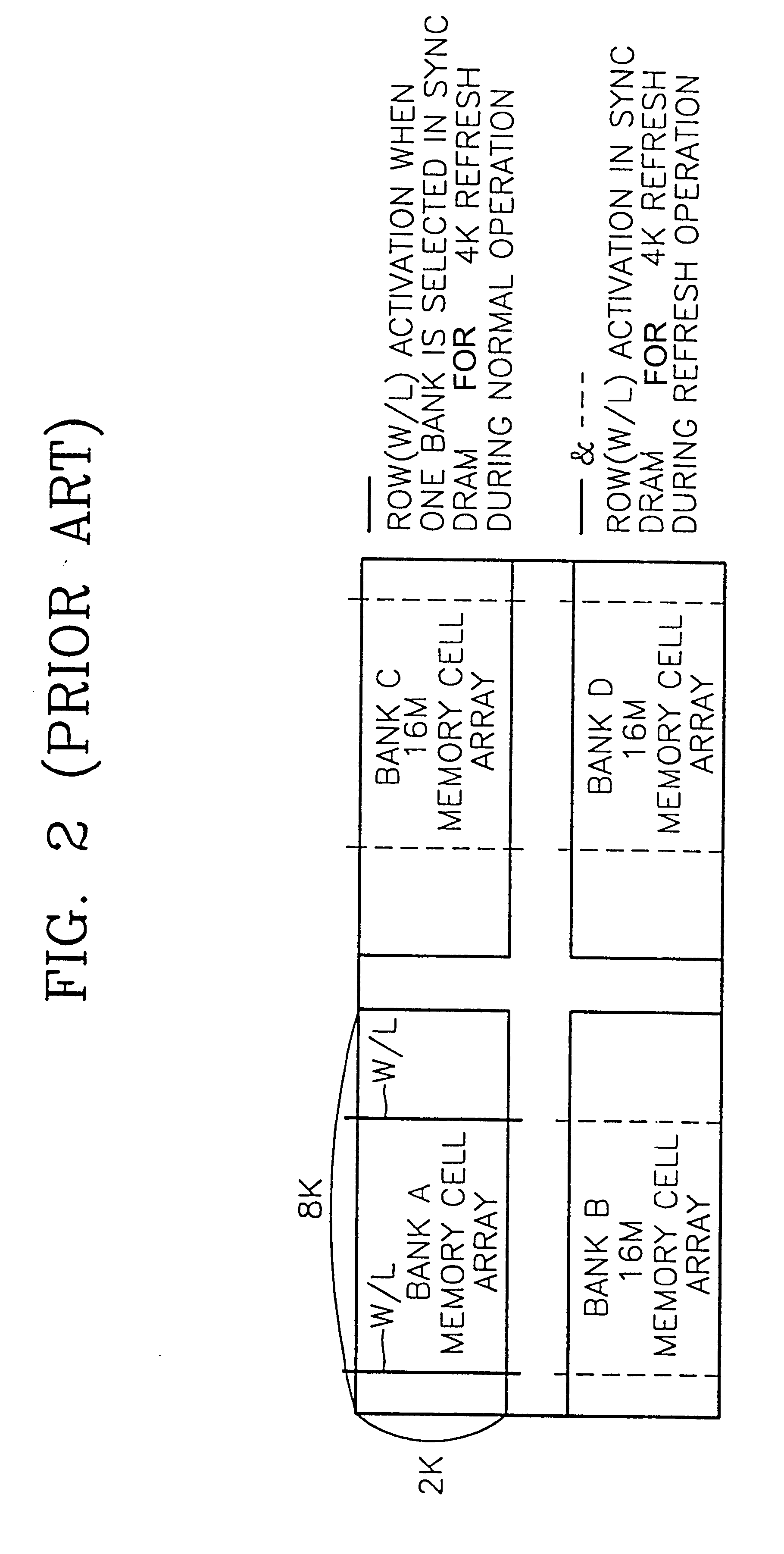Semiconductor memory device and driving signal generator therefor
a technology of memory device and driving signal generator, which is applied in the direction of information storage, static storage, digital storage, etc., can solve the problem that continuous sensing operation consumes a large amount of sensing curren
- Summary
- Abstract
- Description
- Claims
- Application Information
AI Technical Summary
Problems solved by technology
Method used
Image
Examples
Embodiment Construction
The present invention now will be described more fully with reference to the accompanying drawings, in which preferred embodiments of the invention are shown.
Referring to FIG. 3, during a normal operation, a semiconductor memory device according to a preferred embodiment of the present invention drives a portion of word-lines, hereafter referred to as "sub word-lines." Only sub word-lines connected to memory cells to be accessed are driven. Sub word-lines are word-lines W / L divided in a column direction.
In other words, doted lines represent word-lines W / L selected by row addresses. Among the word-lines W / L, the selected portions of the word-lines W / L, which are shown by solid lines, are enabled during the normal operation. The solid lines indicate sub word-lines connected to memory cells selected by column addresses. These sub word-lines are defined by segmenting the word-lines W / L in the column direction.
Referring to FIG. 4, a block diagram of a conventional decoder, once a row com...
PUM
 Login to View More
Login to View More Abstract
Description
Claims
Application Information
 Login to View More
Login to View More - R&D
- Intellectual Property
- Life Sciences
- Materials
- Tech Scout
- Unparalleled Data Quality
- Higher Quality Content
- 60% Fewer Hallucinations
Browse by: Latest US Patents, China's latest patents, Technical Efficacy Thesaurus, Application Domain, Technology Topic, Popular Technical Reports.
© 2025 PatSnap. All rights reserved.Legal|Privacy policy|Modern Slavery Act Transparency Statement|Sitemap|About US| Contact US: help@patsnap.com



